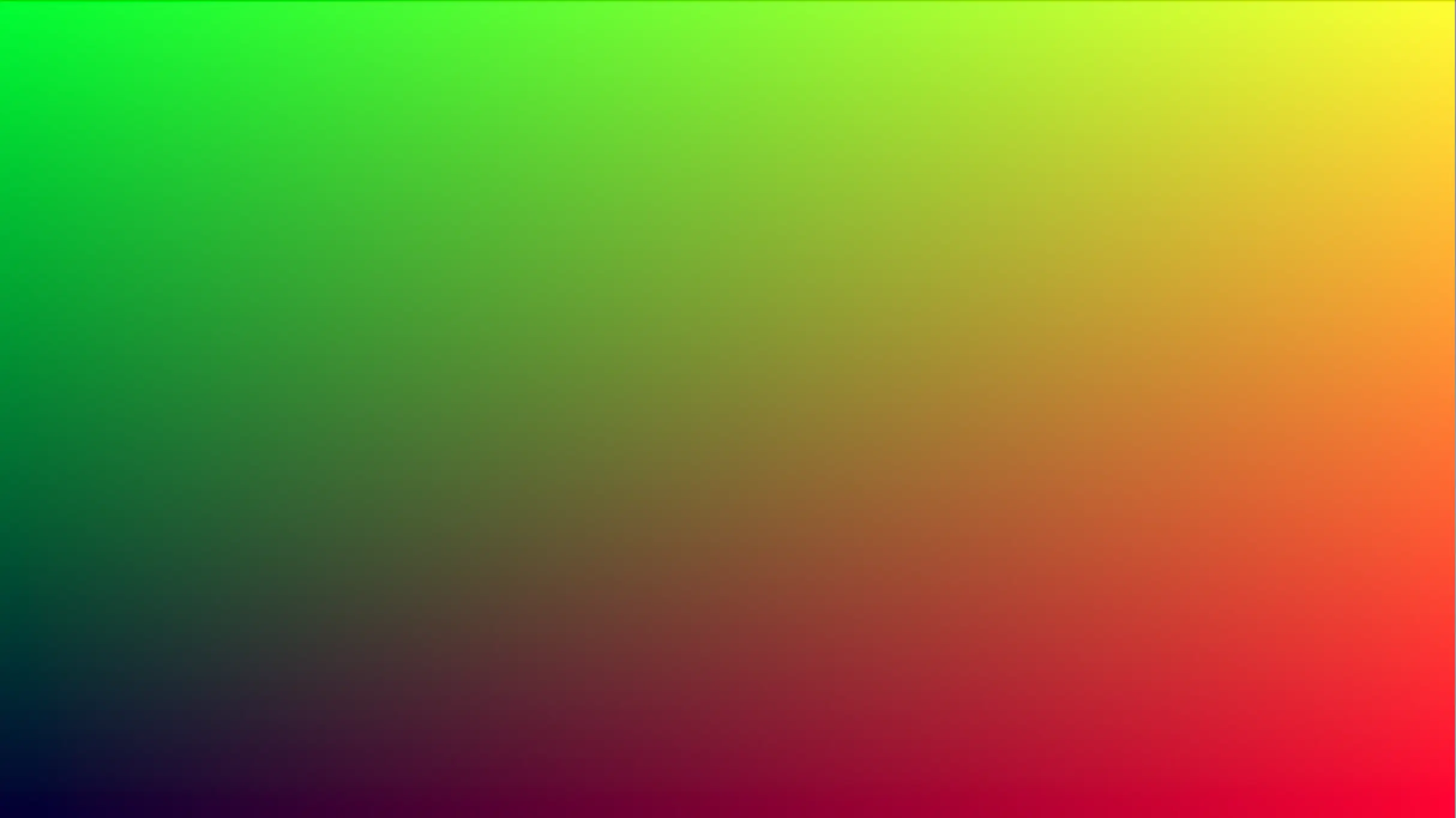这个系列的博客是使用 Rust 来实现 《Ray Tracing in One Weekend》相关的内容,我们把整本书拆开,来分篇实现,这们可以进一步降低难度。PPM是一个简单的图片格式,它将RGB的颜色使用 ASCII 的形式记录在文件中。
这一小节的目标是使用Rust输出一张PPM的图片,最终效果图如下。

首先使用 cargo new rtiow-rs 创建一个名为 rtiow-rs 的工程,然后在 src 目录中新简一个名为 vec3.rs 的文件,并且输入下面的代码。
vec3.rs 主要是对 Vector3 三维向量的抽象,以及一些操作符的重载。
// src/vec3.rs
use std::ops::{Add, AddAssign, Div, DivAssign, Mul, MulAssign, Neg, Sub, SubAssign};
#[derive(Debug, Copy, Clone)]
pub struct Vec3 {
pub x: f64,
pub y: f64,
pub z: f64,
}
impl Vec3 {
pub fn zero() -> Self {
Self {
x: 0.0,
y: 0.0,
z: 0.0,
}
}
pub fn new(x: f64, y: f64, z: f64) -> Self {
Self { x, y, z }
}
pub fn length_squared(&self) -> f64 {
self.x * self.x + self.y * self.y + self.z * self.z
}
pub fn length(&self) -> f64 {
self.length_squared().sqrt()
}
fn to_u64(&self) -> (u64, u64, u64) {
let x = (self.x * 255.999) as u64;
let y = (self.y * 255.999) as u64;
let z = (self.z * 255.999) as u64;
(x, y, z)
}
pub fn get_color_string(&self) -> String {
let xyz = self.to_u64();
format!("{} {} {}\n", xyz.0, xyz.1, xyz.2)
}
pub fn dot(u: Vec3, v: Vec3) -> f64 {
u.x * v.x + u.y * v.y + u.z * v.z
}
pub fn cross(u: Vec3, v: Vec3) -> Self {
Self {
x: u.y * v.z - u.z * v.y,
y: u.z * v.x - u.x * v.z,
z: u.x * v.y - u.y * v.x,
}
}
pub fn unit_vector(v: Self) -> Self {
v / v.length()
}
}
impl Neg for Vec3 {
type Output = Self;
fn neg(self) -> Self::Output {
Self {
x: -self.x,
y: -self.y,
z: -self.z,
}
}
}
impl Add for Vec3 {
type Output = Self;
fn add(self, other: Self) -> Self {
Self {
x: self.x + other.x,
y: self.y + other.y,
z: self.z + other.z,
}
}
}
impl AddAssign for Vec3 {
fn add_assign(&mut self, other: Self) {
*self = Self {
x: self.x + other.x,
y: self.y + other.y,
z: self.z + other.z,
}
}
}
impl Sub for Vec3 {
type Output = Self;
fn sub(self, other: Self) -> Self::Output {
Self {
x: self.x - other.x,
y: self.y - other.y,
z: self.z - other.z,
}
}
}
impl SubAssign for Vec3 {
fn sub_assign(&mut self, other: Self) {
*self = Self {
x: self.x - other.x,
y: self.y - other.y,
z: self.z - other.z,
}
}
}
impl Mul<f64> for Vec3 {
type Output = Self;
fn mul(self, rhs: f64) -> Self {
Self {
x: self.x * rhs,
y: self.y * rhs,
z: self.z * rhs,
}
}
}
impl Mul for Vec3 {
type Output = Self;
fn mul(self, rhs: Self) -> Self {
Self {
x: self.x * rhs.x,
y: self.y * rhs.y,
z: self.z * rhs.z,
}
}
}
impl MulAssign<f64> for Vec3 {
fn mul_assign(&mut self, rhs: f64) {
*self = Self {
x: self.x * rhs,
y: self.y * rhs,
z: self.z * rhs,
};
}
}
impl DivAssign<f64> for Vec3 {
fn div_assign(&mut self, rhs: f64) {
*self = Self {
x: self.x / rhs,
y: self.y / rhs,
z: self.z / rhs,
};
}
}
impl Div<f64> for Vec3 {
type Output = Self;
fn div(self, rhs: f64) -> Self {
Self {
x: self.x / rhs,
y: self.y / rhs,
z: self.z / rhs,
}
}
}
第二步就是在 main.rs 里写 PPM 的输出代码,代码如下
main.rs中首先是引入上面创建 vec3 的模块文件,然后使用里面的 Vec3 这个结构体。
// src/main.rs
#![allow(dead_code)]
mod vec3;
use vec3::Vec3;
fn main() {
// 定义输出文件的宽度和高度
const IMAGE_WIDTH: u32 = 200;
const IMAGE_HEIGHT: u32 = 100;
let mut content_string = String::new();
content_string.push_str(&format!("P3\n{} {}\n255\n", IMAGE_WIDTH, IMAGE_HEIGHT));
for j in (0..=IMAGE_HEIGHT - 1).rev() {
for i in 0..IMAGE_WIDTH {
let r = (i as f64) / IMAGE_WIDTH as f64;
let g = (j as f64) / IMAGE_HEIGHT as f64;
let b: f64 = 0.2;
let color = Vec3::new(r, g, b);
content_string.push_str(&color.get_color_string());
}
}
println!("{}", content_string);
}
输出文件使用命令 cargo run > image.ppm 即可在项目目录看到输出的ppm格式的图片。